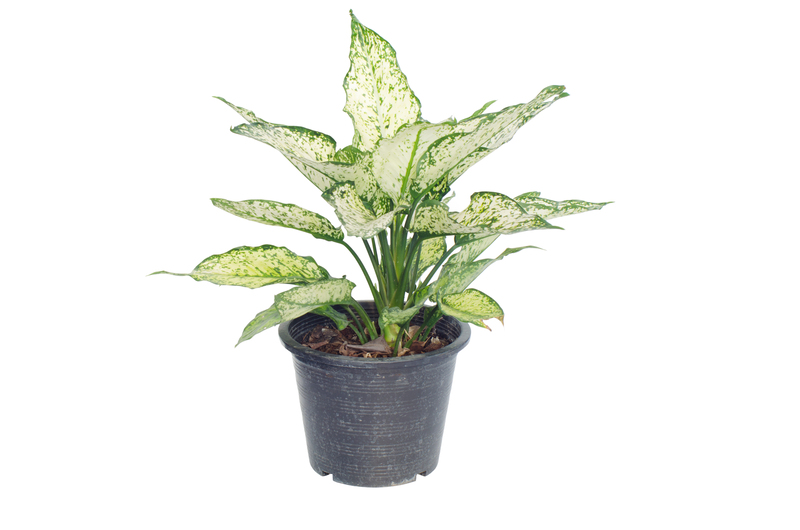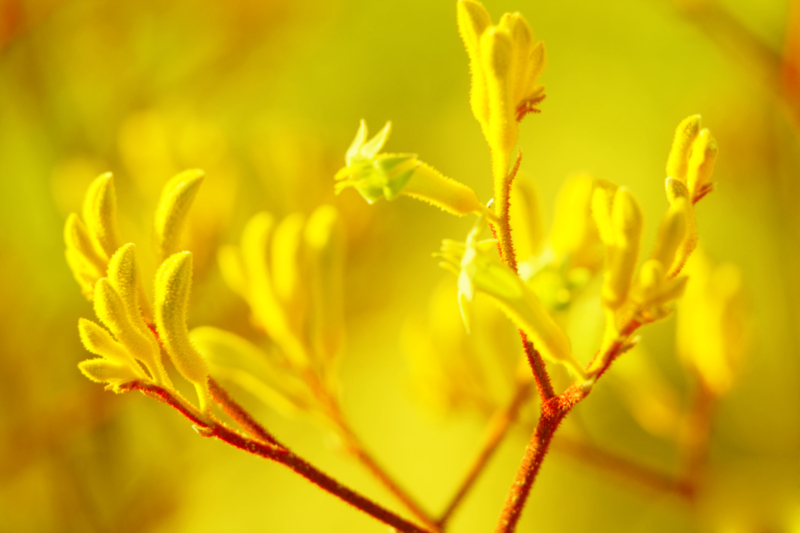Garden Design Tips for Dog Lovers and Green Thumbs
Posted on 27/09/2025
Garden Design Tips for Dog Lovers and Green Thumbs
Do you dream of a gorgeous garden yet fret about muddy paws and chewed blooms? Good news! You can easily blend a flourishing paradise with a dog-friendly yard. Whether you're an avid horticulturist or simply adore spending time outdoors with your furry friend, the right garden design strategies will help you create a harmonious, functional, and beautiful outdoor space. In this comprehensive guide, we'll share garden design tips for dog lovers and green thumbs that ensure both your plants and pups thrive together.
Why Combine Dog-Friendly Gardening with Beautiful Landscapes?
Our dogs are part of the family, so it makes sense to include their needs in our landscaping decisions. Traditional gardens may feature delicate plants, chemicals, and materials that can harm pets. On the other hand, a purely functional dog run is often uninspiring for garden enthusiasts. The challenge for pet owners who love gardening is blending beauty, plant health, and pet safety. The result? A backyard that delights all who use it, both human and canine.
Benefits of a Pet-Friendly Garden
- Safe, toxin-free outdoor play areas for your dog
- Reduced mess and damage to prized plants
- Provide sensory stimulation for pups with varying scents and textures
- Encourage exercise and mental enrichment
- Enjoy more time outdoors with your canine companion

Understanding Your Dog's Garden Habits
To design the ultimate garden for dog lovers, start by observing your pet's current habits outdoors.
Common Dog Behaviors in Backyards
- Patrolling boundaries: Most dogs want to check the fence line for scents and activity.
- Digging: Dogs often dig to cool down, reduce boredom, or simply chase a scent.
- Running paths: Favorite routes can result in worn, muddy "dog highways."
- Chewing and nibbling: Some pups love tasting grass, flowers, or even sticks.
- Lounging: Sunbathing or relaxing in shady garden nooks is a canine favorite.
Tip: Document these behaviors and plan your garden zones around your pet's habits to minimize damage and maximize enjoyment.
Garden Design Tips for Dog-Friendly and Lush Landscapes
1. Choose Dog-Safe Plants
Plant selection is central to creating a pet-friendly garden design. Some popular plants are toxic to dogs and should be avoided. Others are resilient and will handle a bit of roughhousing.
- Skip: Azalea, daffodil, oleander, foxglove, yew, sago palm, lilies, and tulip bulbs (all toxic to dogs).
- Try: Sunflowers, marigolds, snapdragons, camellias, roses, and herbs like rosemary, thyme, basil, and sage (all non-toxic to dogs).
For a complete list, check the ASPCA Plant List for toxicity to pets.
2. Install Durable Hardscaping
Paths, patios, and mulch make your garden layout easier to navigate for both you and your dog. Use high-quality hardscaping materials for longevity and aesthetics.
- Paver and flagstone: Smooth, durable underfoot for dogs and humans alike
- Pea gravel: An excellent choice for dog paths, as it won't get muddy
- Artificial turf: Low maintenance, resilient, and dog-safe
- Natural mulch: Pine, cedar, or cypress wood chips are preferable to cocoa shell mulch, which can be toxic to dogs
Tip: Avoid sharp gravel and cocoa mulch; both can harm pets. Opt for rounded pebbles and safe organic mulch instead.
3. Designate Dog Zones
One of the best dog garden design tips is to give your pup a space to dig, roll, or play--while keeping your prize plants safe. Set aside a corner or create defined "dog-friendly" pathways around your yard. Reinforce high-traffic areas with hardscaping or tough groundcovers, and use tall, dense borders to discourage wandering into delicate flower beds.
- Dog runs: A fenced section with soft sand or turf
- Paths: Gravel, flagstone, or grass loops that follow your dog's natural patrol
- Sunbathing spots: Raised decks or smooth boulders for lounging
- Shady shelters: Install a pergola, shade sail, or leafy trees for cool reprieve
4. Install Pet-Safe Fencing and Boundaries
Secure fencing is crucial: It keeps your pets safe and protects your landscaping investment. Choose sturdy fencing at least 4 to 6 feet high, with smooth surfaces and no escape holes. Planting a living hedge--like boxwood or privet--can enhance privacy and soften harsh boundaries while discouraging digging or jumping.
- Reinforce base of fences with rocks or chicken wire to deter escape artists
- Use decorative borders or raised planters around gardens to keep dogs out
- Opt for smooth, chew-proof materials for gates and fence posts
5. Pick Tough, Dog-Proof Groundcovers
Grassy lawns are the classic choice but not always the best for heavy-pawed play. Try these durable, pet-friendly alternatives to traditional turf:
- Clover (less prone to brown urine spots)
- Buffalo grass and zoysia (resistant to wear and drought)
- Dichondra, creeping thyme, or Irish moss (soft, low-growing groundcovers)
Avoid: Ornamental grasses with sharp edges and spiked seed heads, which can injure dogs' paws or skin.
6. Embrace Raised Beds and Container Gardening
Raised garden beds and elevated planters are a dog lover's best friend. They keep delicate veggies and flowers above paw level and reduce damage from digging or trampling. Large containers or vertical gardening systems are ideal for patios and small spaces, providing beauty and bounty while protecting your plants from canine curiosity.
7. Practice Safe Chemical-Free Gardening
Many garden chemicals are harmful to dogs. Instead of synthetic pesticides, herbicides, or slug pellets, choose organic and pet-safe methods:
- Use compost mulch and hand-weeding for healthy soil
- Try natural pest control (beneficial bugs, neem oil, diatomaceous earth)
- Avoid fertilizers containing blood meal, bone meal, or cocoa shell
Tip: Store all chemicals securely out of reach and clean up promptly after application.
8. Create Sensory and Enrichment Features
Engage your dog's nose and mind with garden elements designed just for them:
- Herb spiral or patch: Plant dog-safe, aromatic herbs like lavender, basil, or chamomile that release scent when brushed by fur
- Small pond or fountain: Provides drinking water and soothing sounds (always supervise and keep water clean)
- Obstacle course: Low logs to jump, tunnels to run through, or boulders to climb
Best Garden Tools and Accessories for Dog Lovers
To make gardening with dogs easier, invest in a few key tools and accessories that protect your garden and satisfy your pup's needs:
- Sturdy garden hoses to wash muddy paws before reentering the home
- Compostable dog waste bags and a dedicated outdoor trash bin
- Pet-safe garden edging and fencing
- Easy-to-clean outdoor dog beds or mats
- Enrichment toys for outdoor play sessions
Common Mistakes to Avoid in Dog-Friendly Gardens
Even the most experienced green thumbs can make mistakes when sharing their backyard with dogs. Here are some potential pitfalls:
- Ignoring your dog's natural instincts: Plan for digging, running, and exploring rather than trying to prevent them.
- Planting toxic flora: Always double-check plant selections for pet safety.
- Choosing the wrong mulch: Cocoa mulch is highly toxic to dogs--opt for pine or cedar instead.
- Using chemical fertilizers or pesticides: Go organic or select products labeled "pet-safe."
- Failing to provide shade and water: Always allow your dog cool spots to rest and clean water to drink.
Dog Gardening Activities: How to Include Your Pup in Your Hobby
Looking for ways to bond with your pet while working in your garden? Try these activities:
- Designate a digging corner and bury treats or toys for your dog to find
- Practice obedience training among the flower beds
- Supervised fetch sessions on reinforced grassy or gravel areas
- Training to "leave it" helps protect plants as dogs learn boundaries
- Enjoy quiet time reading or lounging together in the shade
Seasonal Garden Care: Keeping Dogs and Gardens Happy Year-Round
Spring and Summer Tips
- Water regularly--pups tend to romp, compacting soil and drying roots faster
- Mow lawns higher for durability and shade
- Harvest herbs and veggies often to promote growth and reduce canine curiosity
Fall and Winter Advice
- Clean up fallen leaves--wet piles can be slimy and hide pet hazards
- Switch mulch as needed to hold warmth for both plants and pets
- Check fences frequently--soil movement can open escape routes

Inspiration: Real-Life Dog-Safe Garden Designs
Gather ideas from real-life garden designs that blend dog and plant needs perfectly:
- Cottage gardens with wide gravel paths and robust shrub borders to absorb pet activity
- Modern minimalist yards featuring roomy decks, raised planters, and artificial turf for ease and cleanliness
- Woodland shade gardens with ferns, hostas (non-toxic varieties), and a hidden dog run
- Pocket gardens or urban rooftop patios with hardy herbs, contained shrubs, and secure fencing
Conclusion: The Secret to a Gorgeous, Dog-Friendly Garden
Balancing a love for lush greenery with a happy, active pup is absolutely possible. With thoughtful planning, smart plant and material choices, and a bit of canine psychology, you'll discover that garden design for dog lovers and green thumbs leads to a space where everyone in the family--humans and dogs alike--can relax, play, and thrive. Get started today, and let your backyard bloom with life, comfort, and beauty for all.
Have you transformed your yard with dog-friendly garden ideas? Share your tips and favorite designs below!

